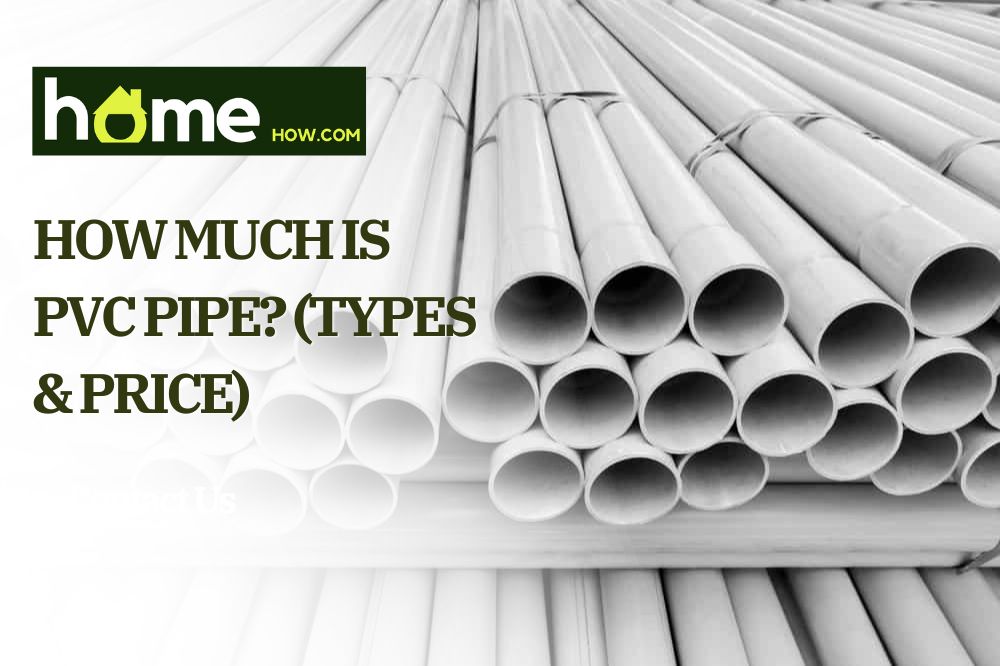Are you looking for PVC pipe for a project or home repair? Unfortunately, over the past few years, the cost of PVC has been steadily rising. If you’ve noticed this dilemma, you may be trying to research PVC pipe prices a whole lot closer before purchasing.
We don’t blame you. So before you begin your next project that involves PVC pipe, here is a guide on how much it costs.
What is PVC Pipe and What is It Used For?
First off, you may be wondering what PVC actually is. Similarly, you may be wondering if it’s the right material to use for your upcoming home project.
PVC is an acronym that stands for polyvinyl chloride. It’s a petrochemical, a thermoplastic material that is used in a variety of applications, both commercial and residential. Common places where you’ll find PVC are in plumbing pipes, siding, fencing, windows, and more.
Generally speaking, PVC is a strong and lightweight material that is relatively inexpensive compared to other types of plastic and other types of piping. This makes it an attractive option for many different types of projects, as opposed to other materials, such as copper, aluminum, or stainless steel, to name a few.
Types of PVC Pipe and Their Price
As you research, you may be surprised to learn that there are many different types and sizes of PVC pipe available on the market. It can get confusing, so we’ve distilled the information down for you.
One way to categorize PVC pipes is by their pressure rating. There are two pressure ratings that are most common. Let’s look at them:
1. PVC Schedule 40 Pipe
One of the most common PVC types you will find is the PVC schedule 40 pipes. This is the kind that is white pipe and the kind that you will find in your local hardware store.
PVC schedule 40 pipe is lightweight, durable, and resistant to chemicals and bacteria. Not only that, but PVC schedule 40 piping also has relatively thin walls, which makes it ideal for many different types of projects. For example, it is often used for a variety of applications including drainage, irrigation, and other systems that involve flowing cold water.
While it is generally white, it can also be found in a multitude of other colors, such as black, grey, pink, purple and so on. However, if you are using it on your house, such as in the drainage system around your yard, you will want to use white, since that is the most well-known type, and it is what your plumber will expect. Certain colors of pipe signal to plumbing professionals what that pipe’s function is.
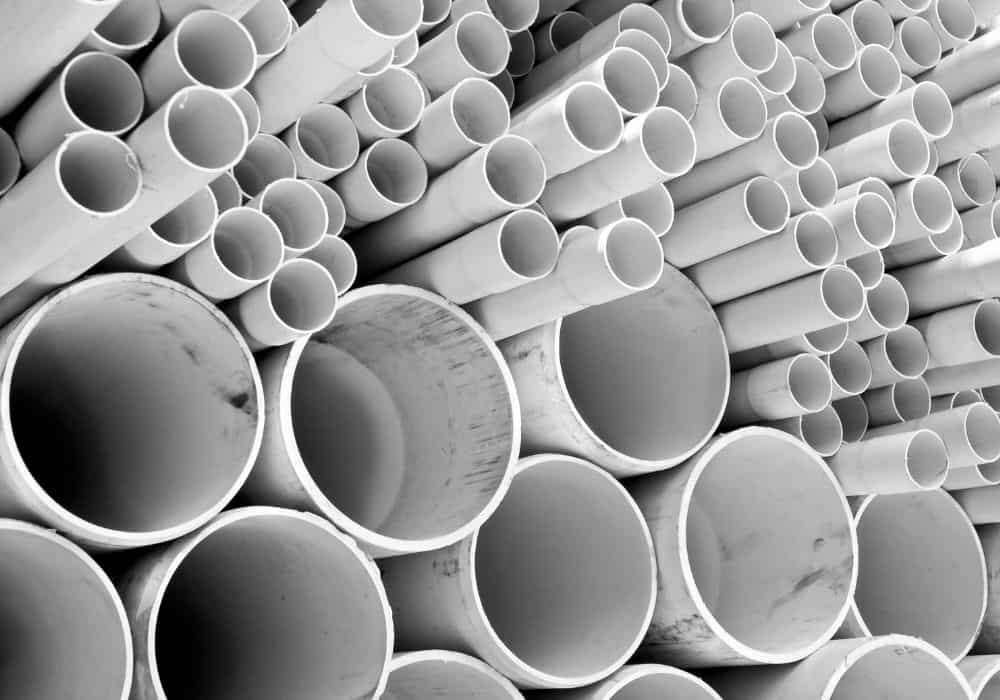
Price of PVC Schedule 40 Pipe
The pricing for any piping (schedule 40 or otherwise) will depend on the size of the pipe’s diameter, as well as the PSI (pounds per square inch) of pressure it can withstand. It will also depend on the brand and the hardware store. With that said, here are some of the most common prices:
- 1/2 in. x 10 ft. schedule 40 pipe: $0.54 per foot
- 3/4 in. x 10 ft. schedule 40 pipe: $0.71 per foot
- 1 1/4 in. x 10 ft. schedule 40 pipe: $1.34 per foot
- 2 in. x 10 ft. schedule 40 pipe: $1.95 per foot
- 3 in. x 10 ft. schedule 40 pipe: $4.18 per foot
- 4 in. x 10 ft. schedule 40 pipe: $3.30 per foot
As you can see, PVC schedule 40 pipe comes in 10 foot lengths quite often. However, they also come in other sizes, too, such as 24 inches (or, 2 feet) long. The prices will vary for this length from the 10 foot length.
2. PVC Schedule 80 Pipe
Another common type of PVC you will find is schedule 80 PVC. Schedule 80 is very similar to schedule 40 PVC, except that it is a stronger and more durable type of PVC pipe. This is because the pipe’s walls are thicker.
The thicker walls on schedule 80 PVC also make it more resistant to chemicals and bacteria than schedule 40 PVC. However, this comes with a downside. The thicker walls make the piping less flexible, which can make installation more difficult.
Schedule 80 PVC is usually found in the color gray, as opposed to schedule 40’s typical white, and it is approved by the NSF (National Sanitation Foundation) to be suitable for servicing potable water.
It is often used in commercial applications because of its durability. For example, you may find it in high-pressure applications, such as in ceiling sprinkler systems and outdoor cold water supply lines. Or you may find the pipes acting as conduits for electrical wiring in buildings.
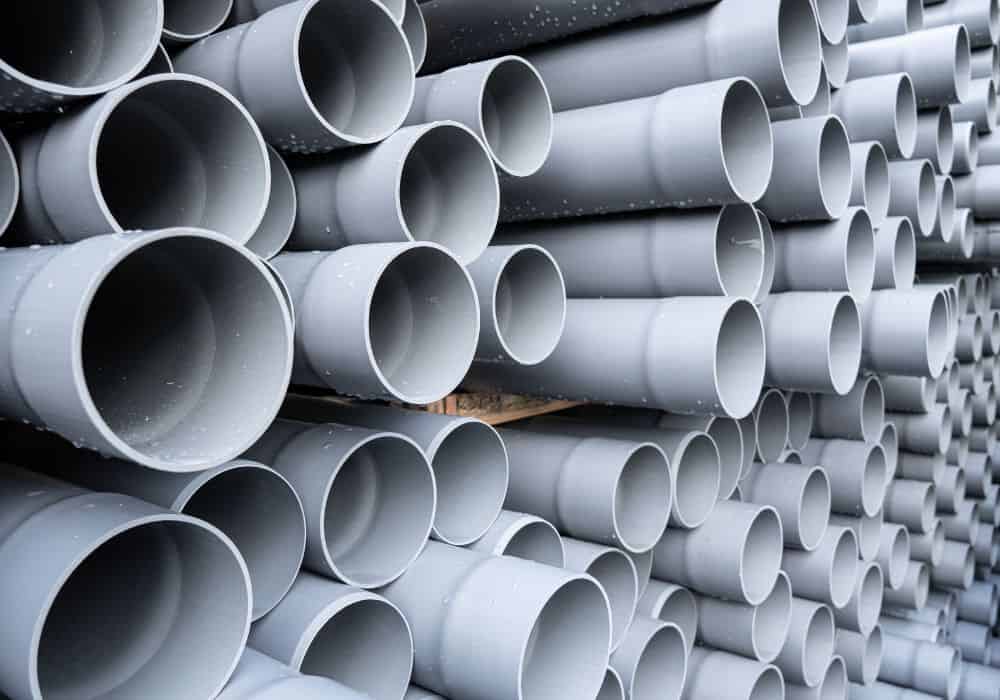
Price of PVC Schedule 80 Pipe
As far as pricing goes, industrial grade schedule 80 PVC pipe is going to be more expensive than schedule 40. Here are some average prices for schedule 80 PVC:
- 1/2 in. x 5 ft. Schedule 80 PVC Pipe: $1.27 per foot
- 3/4 in. x 5 ft. Schedule 80 PVC Pipe: $1.70 per foot
- 1 in. x 5 ft. Schedule 80 PVC Pipe: $2.48 per foot
- 1 1/4 in. x 5 ft. Schedule 80 PVC Pipe: $3.52 per foot
- 2 in. x 5 ft. Schedule 80 PVC Pipe: $5.46 per foot
- 3 in x 5 ft. Schedule 80 PVC Pipe: $18.30 per foot
- 4 in. x 5 ft. Schedule 80 PVC Pipe: $15.81 per foot
Listed here are several of the prices for schedule 80 piping at the 5 foot length. The diameter per 5 foot pipes go up to at least 14 inches across, so there is a wide selection to choose from. And if you’d rather a different length, there are many to choose from, including 8 foot and 10 foot long.
While schedule 80 PVC is more expensive, remember that it is also more durable and resistant. If you need a pipe that is going to withstand a lot of wear and tear, such as in an industrial setting, then schedule 80 PVC is a good option.
Other Types of Plastic Pipes and Their Price
Now that you know the main two types of PVC pipes according to their wall thickness and PSI, let’s look at a few other types of PVC pipes. Each of these can have either a schedule 40 or schedule 80 pressure rating.
1. PVC-U Pipe
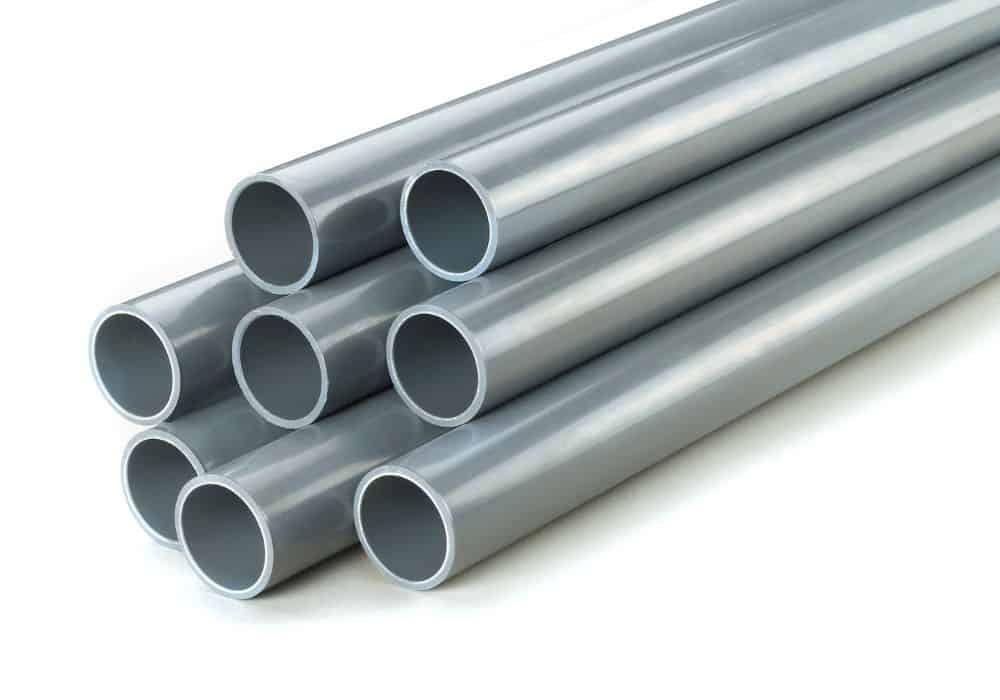
PVC-U pipe is unplasticized PVC pipe. This means that it is not as flexible as other types of PVC, but it is also stronger and more durable. It is often used in construction because it can withstand high pressures, and it can be used above ground or below ground.
You can find this PVC pipe in grey, white, black, and even clear, among others. Clear PVC-U piping is great for using in laboratories, chemical processing, of even electroplating or in food manufacturing, so long as it has been approved by the FDA to be food-safe. Also, PVC-U can be categorized with either a schedule 40 or a schedule 80 pressure rating.
2. CPVC Pipe
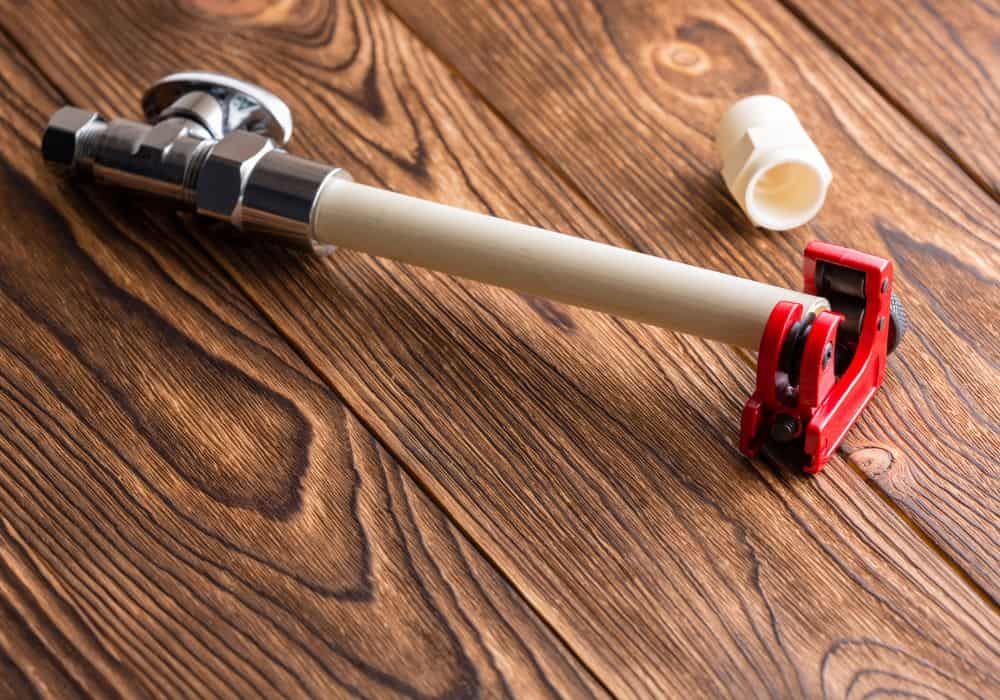
CPVC pipe is made from PVC resin that has been chlorinated. This gives the pipe extra strength, makes it resistant to corrosion, and allows it to withstand high temperatures. For example, regular PVC piping can withstand up to 140 degrees Fahrenheit, whereas CPVC can actually withstand up to 200 degrees Fahrenheit!
It’s very flexible, however, so it will need support every three feet or so, to help the pipe maintain its shape and optimal functionality. It’s great for either residential or industrial applications, as well as for both hot and cold water delivery.
You’ll find CPVC piping in white, but it can also come in other colors, such as grey.
3. PEX Pipe
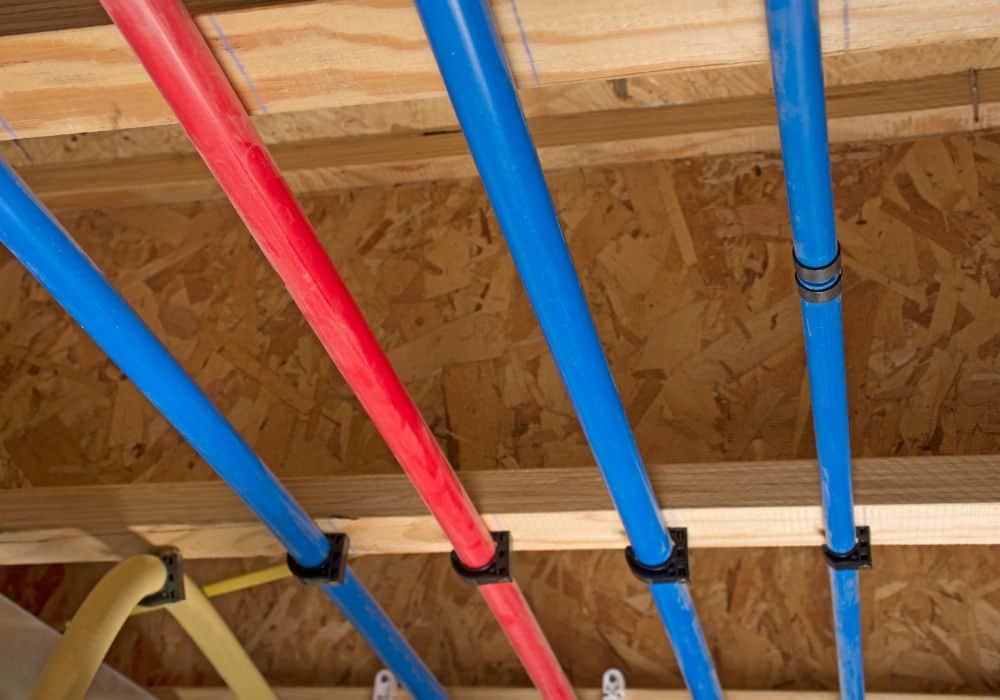
PEX pipe is a thin, cross-linked polyethylene pipe that is very popular these days, as it is more flexible than PVC while still being strong and durable. It’s great for both indoor and outdoor plumbing applications. PEX piping is often used in radiant heating systems as well.
This type of pipe is available in red, blue, and white, among other colors. You may also find it labeled with a number to indicate the level of flexibility. For example, PEX-1 has less flexibility than PEX-3.
PEX piping uses a different pressure rating system, however, it does measure its pressure in PSI, just like PVC piping.
In Conclusion
There you have it–a helpful guide to understanding PVC piping and what prices you are likely to find!
Now that you know more about PVC piping and the different types of plastic pipes, you can make a more informed decision when it comes to your next plumbing project. Always be sure to do your research and find a reputable supplier of quality piping products.
Also, pricing is subject to change, so always double check pricing at your local hardware store before estimating how much your project will cost.
Have you ever needed to purchase PVC pipes? Let us know about your experience in the comments below!
